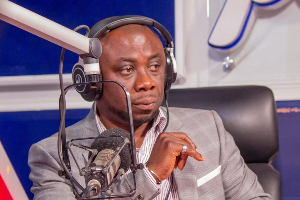Central Banks use monetary policy rates as the benchmark for charging interest on loans and advances to commercial banks. Whenever a commercial bank has a temporary shortage of funds it usually borrows funds from the central bank at the policy rate.
This borrowing by commercial banks from Central Banks is traditionally done via repos (Repurchase Agreements); a transaction in which a commercial bank is lent money and provides government securities as collateral for the loan.
Consequently, as the policy rate increases, the cost of borrowing (repo rate) becomes higher for commercial banks, and vice-versa as the policy rate falls. The policy rate affects overall money supply in the economy through the banking sector. As banks borrow from the Central Bank, their cost of funds and lending rate has a clear correlation with the policy rate.
With Ghana’s economy showing significant resilience and a favorable outlook which is characterized by a relatively stable currency, declining interest rates and inflation, the Money Policy Committee saw fit to reduce the policy rate. The recent policy rate cuts from 25.50% last year to 22.50%, are a sign of an improving economic story. This will have favorable impacts on borrowers and lenders alike. If the trend is sustained, it will improve access to credit for both corporate and individual borrowers.
Accordingly, access to affordable credit will spur productivity in the business sector, increase government tax collection and ultimately propel GDP growth. This notwithstanding, the reality is that the prevailing commercial interest rates of over 20% are still very high and will make it difficult for local corporates to compete with internationally produced goods and services. Although rates have dropped, they are not at a point exciting enough for market players to be eager to put themselves in a position of indebtedness.
There is a sentiment within the borrowing public that banks are slow to reduce their rates in line with cuts in the policy rate by the Bank of Ghana. This is a reasonable view and the associated confusion can be better elucidated with the appropriate context.
Banks source their funding from multiple sources, listed in order of increasing cost; individuals, corporates, other financial institutions and the Central Bank as required and they generally place reliance on cheap retail deposits (from individuals) versus more Central bank funds. As the mix of these funding sources changes, it impacts the risk premium a bank will place on cash, whether it is borrowing from or lending to its customers.
Ideally speaking, commercial banks should be able adjust their lending rates in line with policy rate trend at all times. Banks with larger cheap retail funding bases and cost-effective liability management strategies will have more flexibility to lend at lower rates than banks with higher dependencies on expensive Central Bank funds. The rates in the market have dropped but banks also have balance sheet and other risk sensitivities that will be always reflected in their lending rates. Banks need to lend at rates that protect you their depositors and their capital base.
In line with treating customers fairly, the benefits of any reductions in funding costs should always and most certainly be extended to the customer base of Bank.
Stanbic Bank being a client-centric institution has proudly set its base rate at a competitive rate of 19.76% with effect from 1st June 2017. This means that clients of Stanbic may be able to secure loans at lower rates than at almost any point over the last 18 months.
Business News of Saturday, 17 June 2017
Source: Kofi Pianim

















